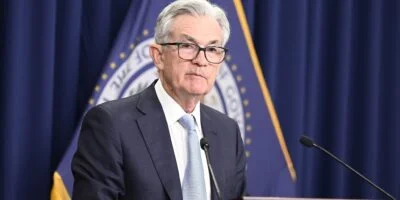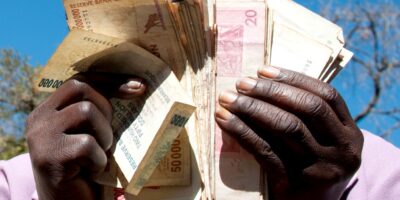The ExIm Bank is Still the Bank of Boeing

During her nomination process to become the chairman of the Export-Import Bank, Kimberly Reed promised Senator Patrick Toomey that she would be an agent of reform at the bank. The bank has a long track record of serving mostly large foreign and domestic companies in higher income nations, and distorting capital markets to fund projects that would likely be funded otherwise. It’s called cronyism and it has a negative impact on the economy and our political system.
On Tuesday, she is testifying again before the Senate Banking Committee and this piece is a warning to them that what the chairman may call reforms will lead to the exact same crony outcomes as we have seen for decades at the Bank. Sadly, few people care these days as we are all preoccupied with many other restrictions of our freedom. Yet, I have to try to send the alarm one more time.
Ex-Im Bank’s “No-Reform” Reform to its Additionality Guidelines
Ex-Im Bank Chairman Reed apparently has put to rest a few of the reform commitments that she made to Senator Toomey in her confirmation hearing nearly two years ago. These commitments included improving protection for domestic companies from economic harm that might arise from Ex-Im Bank financing their foreign competitors, and ensuring that the Ex-Im Bank is not crowding out private financing options that would otherwise be available but for Ex-Im Bank’s involvement.
This piece focuses on the second of these commitments, as reflected in a recently published “Additionality Guidelines and Checklist” document that purportedly will lead U.S. exporters and their overseas buyers to use Ex-Im Bank only when they have no commercial alternatives. I testified a few months ago before the Bank’s Board of Advisors on this same issue. My oral comments can be found here and my written testimony is here.
Unfortunately, a cursory reading of the new guidance suggests the continuation of a longstanding philosophy that will result in few, if any, changes in Ex-Im Bank’s decisions about which borrowers will receive government-backed loans. In fact, if Chairman Reed wants to show how effective her new guidelines are, she should tell us which companies and deals that were approved in the past would not be approved under these new guidelines.
Following is a summary of what appear to be the core elements of the Ex-Im Bank philosophy on Additionality.
The “Foreign Export Credit Agency Under the Bed” Standard
Despite the current economic crisis brought on by the COVID-19 pandemic, in recent decades private capital markets have met the great bulk of export financing needs. However, you would not know that from reading the Ex-Im Bank’s new Additionality guidance, since its primary focus remains the purported threat posed by foreign ECAs to U.S. exporters. (Ironically, this emphasis grew during 2015-2019, when Ex-Im Bank was out of the market because the U.S. Senate would not confirm directors to its, even as commercial financing easily stepped in to take its place.)
Ex-Im Bank keeps a tally of the foreign ECAs in its annual Competitiveness Report, which in 2019 reported 113 such entities. However, since the share of export financing that ECAs provide is in the single digits, these 113 ECAs – which include global trade heavyweights such as Belarus, Swaziland and Zimbabwe – are fighting over a relatively small share of the export finance pie.
It is worth noting, by the way, that the world’s largest provider of ECA financing after China is Italy, which certainly has not demonstrated that piling on export finance subsidies has moved the needle on its economic performance. It seems that Ex-Im Bank’s obsession with foreign ECAs has more to do with its institutional prerogatives and what it views as its own competitors in lines of business that, during the four years when it was out of the market, clearly did not make a difference for U.S. economic growth, exports or employment.
The “Do You Want A Loan?” Standard
The new Additionality guidance makes a point of requiring that Ex-Im Bank collects evidence that commercial financing is not available to the loan applicant. On its face, this appears to be a worthy principle. However, the guidance is not at all clear about what level of evidence is required to meet this standard:
Potential Evidence: Written evidence, preferably (but not limited to) directly from the exporter/applicant/buyer that commercial financing was unavailable at rates or terms that make the U.S. export competitive. Oral evidence is acceptable only if documented in the form of a memorandum by the loan officer identifying the source, context, and timing of oral confirmation.
If Ex-Im Bank really wants to demonstrate the Additionality of its lending, then a borrower should have to demonstrate that it applied to a commercial lender and was turned down. Instead, Ex-Im Bank will require some form of written evidence that it has not defined, and it will not even be a requirement that such evidence comes from the applicant.
Moreover, in the absence of even vaguely defined written evidence, oral evidence will suffice if the Ex-Im Bank loan officer writes a memo to the file. In reality, there will be no evidence required that the applicant attempted to find a commercial financing alternative to Ex-Im Bank.
A corollary to the “Do You Want A Loan?” Standard could be the “Do You Want A Guarantee?” Standard, which might encompass Ex-Im Bank’s approach to determining if the commercial lenders that trade in Ex-Im Bank guarantees feel that they are being crowded out. Obviously, a private financial institution that profits from no-risk, taxpayer-backed guarantees is unlikely to acknowledge being crowded out. (For elaboration on the question of Ex-Im Bank’s Additionality with respect to commercial lenders, see my discussion of Ex-Im Bank support for the Private Export Funding Corporation in “Comments on the Ex-Im Bank’s Proposed Additionality Criteria,” Mercatus Center, October 25, 2019.)
The “Blame the Regulator” Standard
Another category in the new Additionality guidance is what Ex-Im Bank calls “structural or risk constraints.” These include “regulatory or other constraints,” although there are no criteria provided for assessing such risks. Moreover, as the vast bulk of export finance comes from the commercial sector, it is unclear what the “regulatory constraints” would be that make commercial financing unavailable to borrowers who are willing to pay for it.
The “No Standard” Standard
This last category appears intended to offer a generic loophole in the event that none of the previous loopholes is sufficient to get the deal through. This category includes justifications such as, “The foreign buyer seeks diversification of funding, including dedicated allocation of funding from ECAs.” This raises a few obvious questions. First, if the buyer is actively seeking government financing in lieu of going to a commercial lender, does this not demonstrate crowding out of commercial finance? Second, is it the obligation of the U.S. taxpayer to help a foreign buyer meet its portfolio diversification requirements?
The “Trust Me” Standard
Perhaps the most notable feature of the new “Additionality Guidelines and Checklist” is what they do not feature: a road test. Ex-Im Bank could have validated the new guidance by testing it against a statistically significant sample of past transactions. If none of the prior transactions had failed under the new standards, then we would know for sure that the new standards are toothless. I made this suggestion to Ex-Im Bank’s board of directors and advisory committee back in January, while the new guidance was still under development. I know of no reason why Ex-Im Bank would not have undertaken such a validation exercise, other than that they already knew the likely results.
Ex-Im Bank Additionality in the Era of COVID-19
Given the current global situation, even skeptics might welcome a thoughtful proposal to have Ex-Im Bank help address the economic crisis resulting from the pandemic. In fact, on March 25, Ex-Im Bank announced a set of programs purporting to provide solutions to the COVID-19 crisis (see “EXIM Board Takes United Action in Response to COVID-19 to Support U.S. Exporters and Jobs with Unprecedented Financing Flexibility,” Ex-Im Bank Press Release, 3/25/20).
Chairman Reed claimed that “[Ex-Im Bank] leadership and staff have engaged in robust outreach to U.S. exporters and lenders to understand how we can help in this time of uncertainty and need,” and that Ex-Im Bank’s proposed solutions “are a direct result of those conversations.” It is worth noting, however, that three of the four solutions that Ex-Im Bank has advanced to address the crisis represent a recycling of existing programs. These had been underutilized in the period of record economic growth preceding the current downturn. Dusting off old ideas in the face of an unprecedented challenge casts some doubt on whether Ex-Im Bank is providing support that the market needs.
Moreover, with respect to two and likely three of these programs, it is hard not to feel that at least a few of Ex-Im Bank’s old clients had a hand in their design. A clear hint of this came during the Ex-Im Bank board of directors’ discussion of the programs on March 25, which was open to the public and listened to, during which Ex-Im Bank’s top official for aircraft finance led the presentation on the first two programs below.
- The Pre-Delivery / Pre-Export Payment Program, which provides payments during manufacturing for capital goods with long lead times, is a previously underutilized program that Ex-Im Bank seems to be dusting off for old clients in the aircraft (Boeing), satellite (Boeing), turbine (GE) and locomotive (GE) sectors.
- The Temporary Bridge Finance Program, which is the only new program among the four, is described as a short-term, emergency facility. However, each loan is (in Ex-Im Bank’s own words) “hard-wired” to last for up to 10 years, with the borrower at its sole discretion able to roll over the loan year after year without increased pricing or other means to incentivize the borrower to refinance in the private market (where financing might be more expensive). One apparent use of this purported “bridge” financing could be to prop up Boeing’s economically distressed foreign customers.
- The Supply Chain Financing Guarantee (SCFG) Program, around since 2010 but rarely utilized, seems well-intended to provide emergency liquidity to suppliers in U.S. supply chains. However, upon reintroducing the SCFG Program as a COVID-19 product in March, Ex-Im Bank eliminated the program target for 50% of such suppliers to be small businesses. Then, earlier this month, Ex-Im Bank’s board of directors approved its first use of the facility: a $459 million Ex-Im Bank guarantee of accounts receivable that Boeing owes to a GE-affiliated engine manufacturer, CFM International. (At the same meeting, the board of directors approved $498 million in Boeing airplanes to Turkish Airlines. So it was a good day for Boeing at Ex-Im Bank and a return to old times.)
In other words, The Bank of Boeing is strong, and ready to serve the same old masters they have been serving for years. Meanwhile, whatever Boeing has right now, it won’t be fixed by Ex-Im handouts. A recent report found that Boeing’s design of the MAX is at fault for the terrible accidents that killed hundreds, and that the FAA did a terrible job likely due to its cosy relationship with the manufacturer. And the FAA still continues to stonewall the Senate’s investigation into the Boeing MAX’s crashes. In other words, Boeing continues to be well-connected and well-protected by cronies in various government agencies, and apparently that includes Ex-Im. Will the Senate Banking Committee do something about this? We will see.
When “Temporary” is Not Temporary
One of the big risks of government action in a crisis is that the intervention remains long after the crisis has receded – that is, long after the case for Additionality has vanished. Ex-Im Bank earned its nickname of The Bank of Boeing precisely because it could not bring itself to let go of the aircraft market even after the last global crisis had passed. Perhaps in a nod to Additionality, Ex-Im Bank appears to have gone to great lengths to describe each of its COVID-19 products as being “temporary.”
In fact, the Ex-Im Bank board resolution approving these interventions mentioned “temporary” eight times (see Export-Import Bank of the United States Board Resolution, March 25, 2020). If I were an optimist, I would call that eight cheers for Additionality. Based on Ex-Im Bank’s past behavior, however, as well as the many loopholes in its new guidance on Additionality, I doubt that these COVID-19 “temporary relief measures” will be temporary. Rather, I fear that Ex-Im Bank will maintain a large footprint in the market long after COVID-19 has passed.
Conclusion
If reforms mean window dressing changes that will not disturb the way things have been done at Ex-Im, then yes, Chairman Reed oversaw some real reform at ExIm. If reforms mean that things will change, then she hasn’t.










